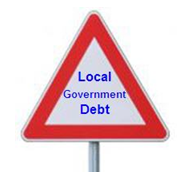The Price Is Wrong, Bob!
by Kasie R. Jean With significant contributions and analysis from Ben Resnick
With significant contributions and analysis from Ben ResnickThe Price Is Right, one of America’s favorite game shows, can be used to illustrate numerous economic concepts, including optimal bidding strategies, risk preference, and search theory. Twice an episode, one of the most purely mathematical portions of the show occurs, when contestants take their turn to spin "the big wheel." In addition to being a crucial prelude to the Showcase Showdown, it is a convenient hands-on application of using probability theory to derive an optimal decision-making rule. The wheel contains 20 equally sized panels corresponding to values between $0.05 and $1.00. Three contestants reach the wheel during each half of the show. The winning contestant is the one whose total score comes closest to a dollar without going over; as a prize, they earn one of the two spots in the show’s final round, the Showcase Showdown. One at a time, each contestant spins the wheel to get an initial value. The player then has the option to keep his current value or spin one more time. If he spins again, his final score is the sum of his two spins. Any contestant that goes over $1.00 automatically loses. In the event that two or three contestants are tied with the same final value, they each spin the wheel once, highest score winning.
Consider three contestants: Mr. 1 will spin first, Ms. 2 will spin second, and Mrs. 3 will spin last. Assuming that all of the contestants aim to maximize their chances of winning a spot in the Showcase Showdown, we set out to derive the optimal strategy for Mr. 1. In order to determine his optimal strategy, we will make three simplifying assumptions. First, each result from spinning the wheel is an independently determined random outcome, where each panel is equally likely to be spun. Next, in the event of ties, each tied player has an equal chance of winning (either 50% for a two-person tie or 33% for a three-person tie). Finally, the show pays a $1,000 bonus prize (and a chance to earn even more money on a “bonus spin”) to any contestant scoring exactly $1.00 on one spin or a combination of two spins. However, we will not consider these cash prizes as an extra incentive to spin again since they have no bearing on which contestant goes to the Showcase Showdown. We focus only on the decision-making rule that gives Mr. 1 the best chance to make the final round.
The only decision a player makes during the game is whether to spin again or stop after the first. Clearly this decision will depend on the value of the first spin—the higher the first spin, the more reasonable it is to stop. To explain fully how a player maximizes his chance of reaching the Showcase Showdown, we solved for a cutoff value: the lowest initial spin value where Mr. 1 has a higher probability of winning by staying rather than spinning again. In order to find the optimal stopping value for Mr. 1, we first calculated the probability that Mr. 1 wins the game (either outright or through the tie-breaker) if he stays with any initial spin. This gives 20 different probabilities of winning the game if Mr. 1 stays, one for each possible spin value. For example, if Mr. 1 stops with $0.55, he stands a 7.4% chance of winning whereas if he stops with $1.00, he has an 86.2% of going to the Showcase Showdown. Next, we calculated the odds that Mr. 1 wins if he spins again. To do this, we looked at his likelihood of winning for each possible score after his second spin is added to his first. Mr. 1’s optimal cutoff in this game is $0.70, where stopping with a spin of $0.70 gives a 19.8% chance of winning, but spinning again gives only a 15.8% chance of winning. At any initial spin less than $0.70, Mr. 1 has a better chance of winning by spinning again. For example, after a first spin of $0.65, Mr. 1 has a 14.6% chance of winning if he stops and a 16.8% chance of winning by spinning again. By a similar method, we find that in the case where Mr. 1 goes over $1.00, the stopping rule that maximizes Ms. 2’s chances of winning is to stop with any initial spin of $0.55 or more.
Discussion Questions
1. How would you expect the stopping values to change if a fourth player were added to this game? What would the effect on the stopping values be if we factor in the bonus prize for a total score of exactly $1.00?
2. Given that the stopping values decrease as fewer players remain in the game, do you expect a player with a certain spot in the order to have an advantage? If so, which one?
3. Deal or No Deal is an example of another game show where a contestant’s optimal strategy could be described by a stopping rule. Can you think of other games where this type of strategy can be applied?
Labels: Cost-Benefit Analysis, Game Theory, Probability Theory






